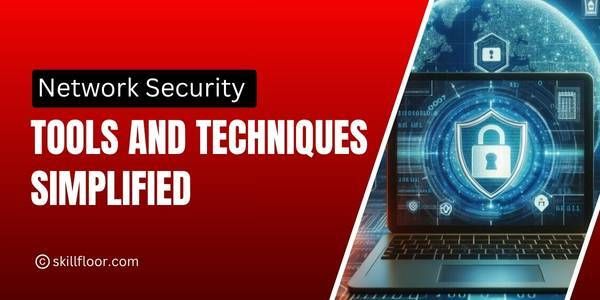Emerging Trends in Cybersecurity: Biometrics, Blockchain, and Beyond
Explore emerging trends in cybersecurity, including biometrics and blockchain technology, as we delve into the future of safeguarding digital assets and data.

The introduction sets the stage by acknowledging the dynamic nature of cybersecurity. It highlights how the field is constantly changing due to evolving threats, technologies, and practices. This section aims to create awareness about the need for adaptability and vigilance in the face of an ever-shifting cybersecurity landscape. It serves as a precursor to the main content, emphasizing the importance of staying updated and informed in order to effectively navigate this rapidly changing field.
Biometrics in Cybersecurity
Biometrics, in the context of cybersecurity, involves the use of unique physical or behavioral traits for user authentication and identification. These traits can include fingerprints, facial recognition, iris scans, voice recognition, and even behavioral patterns like typing speed.
The applications of biometrics in cybersecurity are extensive. Biometric authentication enhances security by providing a more reliable way to verify a user's identity compared to traditional usernames and passwords. It finds applications in securing devices, access control systems, and even online accounts.
While biometrics offer several advantages such as increased security and convenience, they also come with challenges. Privacy concerns regarding the storage and use of biometric data are significant. Additionally, biometric systems can be vulnerable to spoofing and may not always be foolproof.
Real-world examples of biometric cybersecurity include smartphone fingerprint and facial recognition, which allow users to unlock their devices securely. Biometrics are also employed in border control and airport security for identity verification, further demonstrating their relevance in modern cybersecurity practices.
Blockchain Technology and Cybersecurity
Blockchain
Blockchain is a distributed ledger technology that underpins cryptocurrencies like Bitcoin. It operates on a decentralized network, making it highly secure. In the context of cybersecurity, blockchain's fundamental concept involves creating a tamper-resistant chain of data blocks, where each block contains a record of transactions. These transactions are cryptographically linked, ensuring transparency and immutability.
Use Cases in Cybersecurity
Blockchain has found various applications in the realm of cybersecurity. It can be used for secure identity verification, ensuring that individuals' digital identities remain protected. Additionally, it plays a significant role in securing supply chains, providing transparency, and preventing tampering with goods in transit. Smart contracts, powered by blockchain, automate and secure contractual agreements.
How Blockchain Enhances Security
Blockchain enhances security through its decentralized, transparent, and immutable nature. Since data on the blockchain cannot be altered without consensus from the network, it guards against unauthorized modifications or hacking attempts. Furthermore, its cryptographic features provide robust authentication and encryption, bolstering the protection of sensitive information. In essence, blockchain technology offers a resilient foundation for building secure systems and applications in the cybersecurity domain.
Artificial Intelligence (AI) and Machine Learning (ML)
The Role of AI and ML in Cybersecurity
Artificial Intelligence (AI) and Machine Learning (ML) play a pivotal role in bolstering cybersecurity efforts. These technologies enable organizations to analyze vast amounts of data in real-time, identifying patterns and anomalies that may indicate cyber threats. By leveraging AI and ML, security teams can enhance their ability to detect and respond to security incidents swiftly and efficiently.
Predictive Analytics and Threat Detection
AI and ML empower predictive analytics, allowing cybersecurity professionals to anticipate potential threats before they materialize. Through the analysis of historical data, AI-driven models can recognize emerging attack patterns and vulnerabilities, helping organizations proactively fortify their defenses.
Automating Security Measures
Automation is a key benefit of AI and ML in cybersecurity. These technologies can automate routine security tasks such as patch management, network monitoring, and incident response. This not only increases operational efficiency but also reduces the risk of human error in critical security processes.
Ethical Considerations
While AI and ML offer substantial advantages in cybersecurity, ethical concerns must be addressed. Ensuring fairness and transparency in AI algorithms, guarding against algorithmic bias, and protecting sensitive data used in machine learning models are essential ethical considerations. Balancing the power of AI with responsible use is crucial to maintaining trust and integrity in the cybersecurity field.
Quantum Computing and Cybersecurity
Quantum Computing
Quantum computing represents a paradigm shift in computing technology. Unlike classical computers that rely on bits (0s and 1s), quantum computers use qubits, which can exist in multiple states simultaneously due to the principles of superposition and entanglement. This enables quantum computers to perform certain calculations exponentially faster than classical computers.
Impact on Current Encryption Methods
One of the most significant concerns in the realm of quantum computing is its potential to break widely-used encryption methods. Cryptographic algorithms that rely on the difficulty of factoring large numbers, such as RSA and ECC, can be easily cracked by quantum computers using Shor's algorithm. This poses a substantial threat to data security, as many current encryption standards would become obsolete in the presence of powerful quantum machines.
Preparing for Quantum-Resistant Cryptography
To address this vulnerability, researchers are actively developing quantum-resistant or post-quantum cryptography (PQC) methods. These cryptographic techniques aim to withstand attacks from quantum computers. Examples include lattice-based cryptography, hash-based cryptography, and code-based cryptography. Organizations and governments are also working on transitioning to PQC standards to ensure long-term data security in a world where quantum computing becomes a reality. Preparing for quantum-resistant cryptography is crucial to safeguarding sensitive information in the age of quantum computing.
Internet of Things (IoT) Security
The proliferation of Internet of Things (IoT) devices has introduced a host of security challenges. As more everyday objects become connected to the internet, the attack surface for cyber threats widens. In this section, we'll delve into the growing importance of IoT in various industries and its associated security risks and vulnerabilities. We'll also explore strategies and best practices for securing IoT devices, emphasizing the need for robust authentication, encryption, and ongoing monitoring to safeguard against potential breaches and data compromises.
Cloud Security Trends
As organizations increasingly migrate their operations to the cloud, it brings both opportunities and challenges for cybersecurity. Cloud adoption and its security implications have become paramount, as businesses rely on cloud services for data storage, processing, and application deployment. Ensuring the confidentiality, integrity, and availability of data in the cloud is a top priority.
Containerization and microservices security are emerging concerns as modern applications are built using container technologies like Docker and Kubernetes. Securing these microservices and containers requires a specialized approach, including vulnerability scanning and access control.
Zero-trust architecture in the cloud is gaining traction. This approach assumes that no user or system should be trusted by default, even if they are within the corporate network. Implementing zero-trust principles in cloud environments involves continuous verification and strict access controls to mitigate risks effectively.
Data Privacy Regulations
In today's digital age, stringent data privacy regulations like the General Data Protection Regulation (GDPR), the California Consumer Privacy Act (CCPA), and various other global privacy laws have come into effect. These regulations aim to safeguard individuals' personal data and impose strict requirements on organizations handling such information.
Compliance with these laws presents both challenges and opportunities. Organizations must navigate complex legal frameworks, adapt their data practices, and invest in robust cybersecurity measures to protect sensitive data effectively. They must also implement mechanisms for obtaining consent, providing data transparency, and enabling data subjects to exercise their rights.
Data protection in the digital age extends beyond mere compliance. It necessitates a cultural shift within organizations, promoting a privacy-centric approach to data handling. This includes adopting privacy-by-design principles, conducting regular privacy impact assessments, and ensuring that data protection becomes an integral part of business processes.
Cybersecurity in a Post-Pandemic World
The surge in remote work during the COVID-19 pandemic highlighted the critical link between remote work and cybersecurity. With employees accessing sensitive data from various locations, robust security measures are paramount. Employing secure VPNs, multi-factor authentication, and regular security training for remote workers are imperative safeguards.
The pandemic taught us invaluable lessons about cybersecurity resilience. It exposed vulnerabilities and emphasized the need for proactive threat detection and response strategies. Organizations learned to adapt swiftly, implementing agile security protocols and ensuring business continuity in the face of unexpected disruptions.
The future of work is becoming increasingly flexible, with remote and hybrid work models here to stay. This evolution demands a reimagining of security strategies. Companies will focus on endpoint security, secure cloud solutions, and advanced threat intelligence to protect distributed workforces. A holistic approach that integrates technology, policy, and employee education will be key to achieving robust remote and hybrid work security.
The cybersecurity landscape is rapidly evolving with the emergence of biometrics, blockchain, AI, and other cutting-edge technologies. Staying updated on these trends is crucial to maintaining robust security measures. As the threat landscape becomes more sophisticated, organizations and individuals must adapt and invest in advanced security solutions. By understanding and embracing these emerging trends, we can better prepare ourselves for the cybersecurity challenges of the future and ensure a safer digital environment for all.





























































